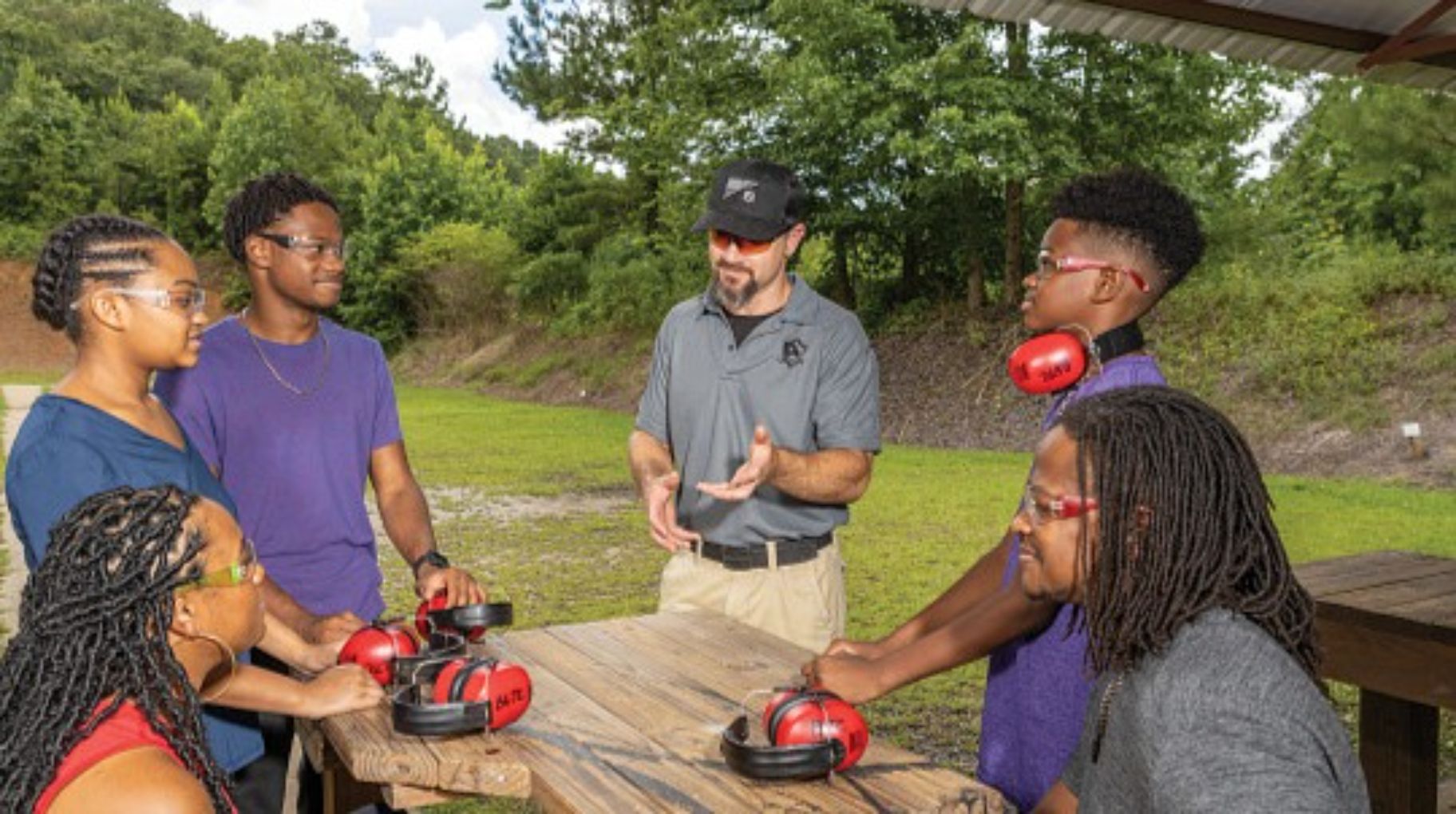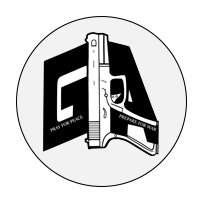Children’s Firearm Safety and
Fundamentals for Parents
Understanding the Importance of Firearm Safety
Why Firearm Safety Matters
In a world where firearms are more accessible than ever, firearm safety becomes a significant concern for parents. Whether or not you have firearms in your home, your children might encounter them elsewhere, making it paramount for them to understand the potential risks and the essential safety measures.
The Impact of Education
The saying “knowledge is power” couldn’t be more accurate when it comes to firearm safety. Educating your children about firearms at an appropriate age can significantly reduce the likelihood of accidents. When children understand the responsibility and risks associated with firearms, they’re better equipped to make safe choices.
Approaching Firearm Safety Based on Age and Ability
Teaching Methods by Age
Different age groups require different teaching techniques. A one-size-fits-all approach doesn’t work here, so let’s break it down:
| Age Group | Teaching Methods |
|---|---|
| Pre-School (3-6) | Use simple, clear language and repetitive instructions. Role-playing and songs can make lessons memorable. |
| Elementary (7-11) | Introduce basic concepts on how firearms work. Use relatable scenarios and interactive activities. |
| Teens (12-18) | Discuss the responsibilities and legal implications. Include hands-on experiences under close supervision. |
Tailoring to Learning Abilities
Children learn in different ways, and it’s vital to tailor your approach to suit their individual learning abilities. Some might benefit from visual aids, while others might prefer practical demonstrations. The key is to be patient and find what works best for your child.
Safe Firearm Storage
Best Practices for Storage
Ensuring that firearms are safely stored at home is the first and most critical step in preventing accidents. Here are some best practices:
- Use Gun Safes: Invest in a quality gun safe to store firearms securely.
- Locked Cabinets: Ensure firearms are stored in locked cabinets if a gun safe isn’t an option.
- Separate Storage of Ammunition: Always store ammunition separately from firearms.
- Trigger Locks: Use trigger locks for an added layer of safety.
Preventing Unauthorized Access
It’s essential to make sure children or any unauthorized individuals do not have access to firearms. Always keep track of the keys or codes to your gun safe and periodically review your storage arrangements to ensure they remain secure.
Historical Data: What We Can Learn
Understanding Historical Trends
By examining historical data, we can glean critical insights into firearm-related incidents. Over the years, statistics have shown that improperly stored firearms contribute significantly to accidental shootings. Understanding these trends can drive home the importance of implementing robust safety measures.
The Role of Education and Prevention
Historical data also highlight the positive impact of education and preventive measures. Communities with comprehensive firearm safety programs often experience lower incidences of firearm-related accidents, underscoring the importance of initiatives like the ones offered by Green Line Arms.

Scenario Reviews: Practical Application of Safety Plans
Realistic Scenario Reviews
One of the most effective ways to reinforce safety plans is through scenario reviews. By practicing what to do in various situations, both you and your children can be better prepared. Here’s an example:
- Scenario: Your child finds a firearm at a friend’s house.
- Response: Teach them to stop immediately, not touch the firearm, leave the area, and inform an adult.
Regularly reviewing such scenarios can help your child internalize the correct steps to take in potentially dangerous situations.
Decision-Making Skills
Participating in scenario reviews can significantly enhance your child’s decision-making skills. Understanding what constitutes a dangerous situation and how to respond appropriately becomes almost second nature through repeated practice.
Educating Your Children About Firearm Safety
How, When, and What to Teach
It’s crucial to break down the education process into manageable chunks. Here’s a basic guideline on how, when, and what to teach:
- Early Years (Ages 3-6): Teach them to never touch anything that looks like a gun and to always inform an adult.
- Elementary Years (Ages 7-11): Introduce concepts of how firearms work and basic safety rules such as “Always assume a gun is loaded.”
- Teen Years (Ages 12-18): Discuss the broader implications, responsibilities, and legal aspects of firearm ownership.
Making Lessons Engaging and Memorable
Keep the lessons engaging by incorporating games, role-playing, and other interactive methods. The goal is to make the learning process memorable so that the safety principles you teach are ingrained in their minds.
Prevention: Dispelling Myths and Understanding Risks
Debunking Common Myths
There are many myths surrounding firearms, and it’s vital to address these myths head-on. For instance, the notion that hiding a gun is an effective safety measure is false. Children are naturally curious and might find hidden firearms, leading to dangerous situations.
Using Data for Effective Prevention
By analyzing hospitalization data and other statistics, you can understand the full scope of firearm-related risks. This knowledge can inform more effective prevention strategies, such as the need for robust community safety programs and initiatives.
Community Involvement
Communities that work together on firearm safety usually see better results. Joining local programs and engaging in community efforts can provide additional resources and support.
Actionable Steps for Parents
Incorporating Safety Plans at Home
Creating and maintaining a comprehensive safety plan at home is essential. Consider the following aspects:
- Regular Safety Drills: Conduct regular safety drills to ensure everyone knows what to do in case of an emergency.
- Open Communication: Foster an environment where your children feel comfortable discussing any concerns about firearms.
- Continuous Education: Safety education shouldn’t be a one-time event. Keep learning and stay updated with new information and safety measures.
Reviewing and Implementing Safety Plans
Regularly review your safety plans to ensure they cover all scenarios and are effective. Implement any necessary adjustments to address new findings or changes in your household dynamics.
Green Line Arms: Your Partner in Firearm Safety
Courses and Seminars Offered
Green Line Arms offers a range of courses designed to equip parents and guardians with the knowledge and skills needed for effective firearm safety education. These courses include:
- Children’s Firearm Safety and Fundamentals for Parents: A comprehensive seminar covering essential topics from storage solutions to practical scenarios.
- Virtual Shooting Range: Provides a safe and controlled environment for practical hands-on training.
Why Choose Green Line Arms?
Located in Pensacola, Florida, Green Line Arms is committed to promoting responsible gun ownership through advanced training programs and cutting-edge simulation experiences. Their holistic approach to firearm safety makes them a trusted partner for parents looking to educate their children about firearms responsibly.
Conclusion
Ensuring your children’s safety around firearms involves a blend of education, preparation, and active prevention. By understanding the importance of firearm safety, applying age-appropriate teaching methods, practicing realistic scenarios, and implementing robust safety plans, you’re taking crucial steps toward ensuring a safer environment for your family. Green Line Arms is here to support you through every step of this journey, offering the resources and expertise needed to navigate this essential aspect of parenting.
Remember, the ultimate goal is not to instill fear, but to empower your children with the knowledge and tools to make safe, informed decisions. Wouldn’t you agree that peace of mind is invaluable?
For more information or to enroll in one of our courses, contact Green Line Arms today.

